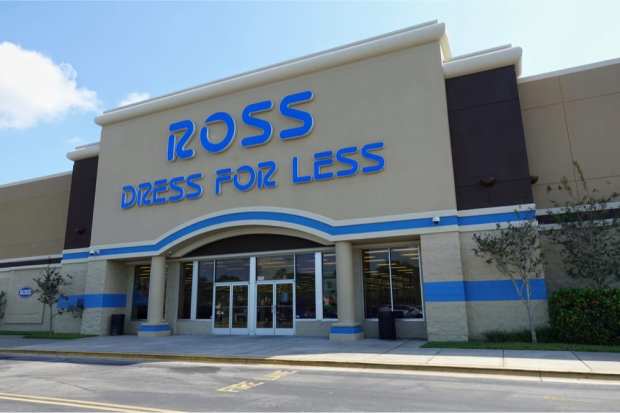Digital De-Evolution: Ross Stores Takes Q2 Hit

Ross Stores might want to check out this eCommerce thing. While its competitors were able to post some online revenue as their stores were closed due to the pandemic, the 1,483-store discount chain pitched a virtual shutout for Q2.
By the numbers, total sales for the period were $2.7 billion for the quarter, down from $4.0 billion in the second quarter of 2019. Comparable store sales were down 12 percent for reopened stores from the date of their reopening to the end of the fiscal quarter. For the six months ended Aug. 1, the company reported a per-share loss of $0.81, in contrast to earnings per share of $2.29 for the same period last year. The net loss for the first half of 2020 was $284 million, compared to net income of $834 million in the prior year. Sales for the first six months of 2020 declined 42 percent to $4.5 billion.
The numbers reflect the COVID-19 related closures of all Ross Dress for Less and dd’s DISCOUNTS locations that began on March 20 and continued through a portion of the second quarter. The retailer began reopening its stores on May 14, with the majority of its locations open and operating by the end of June.
“Comparable stores sales during the quarter were impacted by a number of factors,” CEO Barbara Rentler said in an earnings statement. “During the initial re-openings, sales were ahead of our conservative plans as we benefitted from pent-up demand and aggressive markdowns to clear aged inventory. In the weeks thereafter, trends were negatively impacted from depleted store inventory levels while we were ramping up our buying and distribution capabilities.”
Rentler was not optimistic as Q3 kicks off. She noted that trends have not materially changed from the second quarter with comparable store sales for the first two and a half weeks trending down mid-teens versus last year. She pointed to uncertainty around how the pandemic will continue to evolve and affect consumer demand and the economy, and the potential for shutdowns if COVID-19 cases increase. Given those conditions the company did not provide further guidance for 2020.
The retailer did not address its lack of eCommerce capability on its earnings call. It did note that a lack of back-to-school sales have not provided much of a boost during the month of August and that its closed distribution centers were a drag on its ability to ramp up as its stores reopen.
“I do think there are external factors (in the earnings) that include things like the expiration of unemployment that happened at the end of July,” said Ross CFO Travis Marquette. “And obviously, with no back to school as the country is moved to distance learning that has contributed and I think those are the primary factors. Looking out on long-term growth obviously the pre-COVID trend had customers migrating to value and convenience. And this disruption just accelerated those trends. I’d say with the number of store closures now over and out store count at 1,500 and growing, I think we have a significant opportunity to gain market share over the longer term.”
